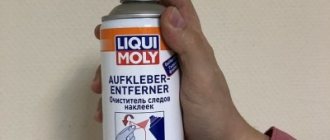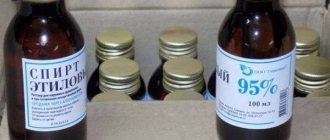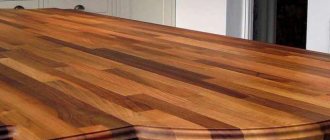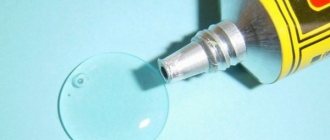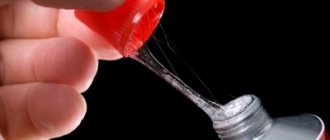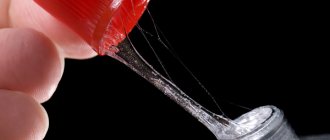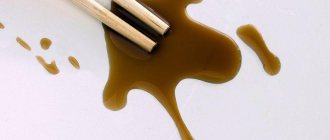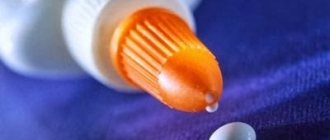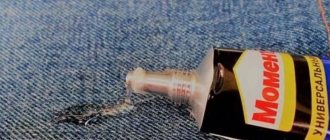How to wash?
Working with rubber glue requires care and precision. Otherwise, your clothes or work area may get dirty. And, as practice shows, it is quite difficult to remove such stains. This requires a lot of time and effort. Since it is important not to damage the clothing or other surface on which the stain has formed.
But you shouldn’t immediately get upset and throw away an unusable item. There are some tricks that will help you cope with this task. Knowing them, you can not only remove stains on clothes from rubber glue, but also easily clean your brush.
What kind of glue did you use?
There are a huge number of types of glue, each with a unique composition. Depending on it, stain removal methods will vary. In everyday life we most often use:
- PVA glue,
- glue stick,
- wallpaper glue,
- silicate glue (liquid glass),
- rubber glue,
- Super glue.
The first three types - with rare exceptions - are water-soluble, and there should be no problems with their removal. We'll look at the rest in more detail.
Cost of work
When calculating the cost of cleaning concrete from tile adhesive, many factors are taken into account. The main ones are the initial state of the concrete surface, the cost of the materials and equipment used.
Estimated cost of cleaning concrete surfaces from glue:
| Name of works | Cost of work, rub/m2 |
| Cleaning concrete surfaces by grinding | from 120 |
| Abrasive blasting cleaning | from 160 |
| Water jet cleaning | from 90 |
| Chemical cleaning of concrete | from 60 |
How to remove silicate glue
postirke.ru
Silicate glue, or liquid glass, is an aqueous alkaline solution of sodium, potassium or lithium silicates. It dissolves in water, so if this mischief maker is responsible for your stained clothes, get the basins ready.
- If the glue has just been spilled, wash the stained areas with warm water: fresh stains will be removed without difficulty.
- If the glue has dried on the skin, the recipe is the same. And you can add a little soap.
- If the glue has dried on your clothes, dissolve 3-4 tablespoons of soda in a liter of water. Soak things in this solution for several hours. Then remove the residue with a brush or scraper.
- If the liquid glass has dried on the glass, there is little chance. Due to the similarity of materials, diffusion begins. The only thing you can do is soak the stain in water for several hours and then scrape it off with a blade. Alas, traces will remain in any case.
Precautionary measures
When cleaning concrete surfaces from tile adhesive, various equipment can be used. The use of this equipment requires strict adherence to safety regulations. Failure to follow these instructions may result in electric shock or fire due to short circuit.
Before starting work you should check:
- serviceability of the grounding device to which the equipment used will be connected;
- integrity of the grounding circuit and grounding wire;
- no short circuits to the body;
- serviceability of power cable insulation;
- tightening of threaded connections;
- integrity of the working tool.
It is strictly forbidden to work with any equipment if the switches operate unclearly, there is increased noise or vibration, there is a smell characteristic of burning insulating materials, or there is leakage of lubricant. Current-carrying wires should be protected from kinks and friction against corners and sharp objects, and should not be allowed to twist or touch hot surfaces.
Particular care must be taken to ensure that chemicals do not come into contact with the eyes and to avoid inhaling their vapors.
You should also handle the chemical compounds used very carefully . Contact with the skin can cause a very painful chemical burn. Before work, make sure that the room is well ventilated. During cleaning, workers must wear special clothing and use personal protective equipment.
How to remove rubber glue
Rubber adhesive, and in particular the popular “Moment Classic”, is made on the basis of rubber and hardens due to evaporation from the solvent composition. Long-term soaking in water, exposure to acetone, gasoline or kerosene will help remove glue. If the stain is fresh, wash it quickly before it hardens.
How to Remove Rubber Glue from Leather
- Try washing dried glue off your hands with plenty of warm soapy water.
- If this does not help, use moisturizers: vegetable oil, fatty cream or Vaseline. Rub any of these substances into the skin until the glue begins to clump.
- If this does not help, we move on to heavy artillery. Apply acetone (nail polish remover) to a cotton swab and apply to the stain for a few minutes until the glue softens. Be careful to use this method only on small areas of skin.
Advice for the future: do not unscrew the tube cap with your teeth if you do not want your lips to stick together.
How to Remove Rubber Glue from Clothes
- Soak the items for several hours in water with laundry soap (a tablespoon of grated soap per liter of water). If the glue has not become embedded in the fibers of the fabric, this method will be sufficient for complete cleaning.
- Try removing particularly stubborn stains with acetone or gasoline. Apply a small amount of liquid to a cotton swab and treat the stains. After this, wash the item as usual. Acetone and gasoline can discolor or damage fabric. Test their effect on a small area before use.
- If you need to remove glue from silk or wool, you will need a more gentle cleaning method. Add citric acid (20 grams) or a tablespoon of 70% vinegar essence to water (100 ml). Apply the solution to the stains, and then wash in the washing machine on the delicate cycle.
- Don't have anything suitable at hand? You can try the critical temperature method: heat the fabric with a hairdryer, and then place it in the freezer. The structure of the glue will collapse, it will become brittle, and it can be scraped off with a knife.
conclusions
A concrete surface is considered clean if there are no foreign substances present on it that could reduce the adhesion strength of concrete to any coating. Cleaning can be done chemically or mechanically. Mechanical cleaning is quite labor-intensive and requires the use of special equipment or a large number of human resources . When using a chemical method, difficulties often arise associated with controlling the depth of the split layer. Very often, chemical cleaning is carried out in combination with mechanical cleaning, which significantly speeds up and facilitates the process.
The abrasive blasting method significantly increases the productivity of cleaning work, but its use generates a large amount of dust and secondary waste, which is not always acceptable from the point of view of labor safety. In terms of economic costs, waterjet cleaning is the most effective . This technology is also environmentally friendly. The use of water allows you to increase the efficiency and speed of cleaning by 1.5-2 times compared to the dry method.
Techniques for mechanically cleaning concrete from tile adhesive are discussed in the video:
How to remove superglue
Superglue is a synthetic cyanoacrylate based adhesive. It hardens upon contact with water and does not dissolve in ethanol, so baths and alcohol compresses are powerless here. To remove superglue, you will need dimethyl sulfoxide (don’t be alarmed, it can be found in any pharmacy under the trade name “Dimexide”) and acetone.
aquagroup.ru
If the stain is fresh, do not wash it with water, quickly look for nail polish remover. Acetone perfectly dissolves superglue in liquid form. With a frozen one, everything is more complicated.
How to Remove Super Glue from Skin
- Leather is a more pliable material than hardened glue. Soften it with cream or oil: this will reduce the adhesion of the stain to the epithelium.
- Make a scrub: mix a spoonful of fine salt, sugar or ground coffee with a small amount of liquid soap and gently rub the stained areas.
- As a last resort, file off the glue layer with a nail file. This method is only suitable for thick skin on the fingers.
- If the glue stain on the skin does not cause any inconvenience, just forget about it for 2-3 days. The sebaceous glands themselves will push it off the surface.
How to Remove Super Glue from Clothes
- Apply a little acetone or Dimexide to the dirt using a cotton swab. Leave for 20-40 minutes, and then wash the item as usual. First test the tissue's reaction to these substances in a small, inconspicuous area.
- The critical temperature method will also help. Heat the fabric with a hairdryer, and then put it in the freezer for a couple of hours. When superglue hardens, it turns into a kind of plastic and becomes brittle so that it can be scraped off.
Anticlean
This product allows you to wash your hands of dried glue residues. When planning construction or repair activities, understanding the inevitability of contact with glue, use anti-glue, which has gained a high level of popularity. The product is sold in construction stores, so there will be no difficulties with the purchase. Anti-glue will remove glue quickly and painlessly, and it can even be used on your hands. Apply the selected product to the sponge, and then thoroughly wipe the contaminated surface. Subsequently, the stains will be successfully dissolved. Residues can be removed from fabric and natural wood without negative consequences.
By studying modern offers, you will be able to make the right choice regarding the product. A small amount will be needed to remove the adhesive. The effect will be achieved in a few minutes. The procedure requires no effort, which guarantees optimal results. Repeat the procedure if desired, as this will increase the chances of a favorable outcome.
An additional option is a special preparation designed to remove hardened glue. Modern manufacturers note the effectiveness of using the product.
Varieties: composition, purpose, instructions for use
The Titan group of products combines several types of adhesive compositions for various repair work. These types of glue are universal products and are used for gluing wood, leather, ceramics, flooring, paper, including wallpaper, plastic and even metal and concrete. What types of Titan glue can be purchased on the construction market?
Universal glue
Titan Wild Premium universal adhesive consists of vinyl acetate copolymers dissolved in denatured alcohol. Used for adhesion of polystyrene, foam, plastic, flooring, wood, fabrics, leather to each other and to concrete, cement and plaster. It is characterized by properties such as moisture and heat resistance. The adhesive retains its properties within the range from -30° to +60°. Primary polymerization occurs within 30 minutes, and complete drying occurs after 24 hours. Transparent glue is available in plastic bottles with a dispenser of 0.25, 0.5 and 1 liter.
Regardless of the adhesive used, it is necessary to prepare the working surface before using it. For better adhesion, you need to clean this area from dust and whitewash, degrease it with alcohol, white spirit or other solvent and dry it thoroughly. It is necessary to level the surface using a primer or putty to prevent the formation of air chambers that prevent reliable adhesion of the parts.
Glue, as a rule, is applied in a thin layer in a continuous strip or dotted, but it is better to glue porous materials twice. After waiting a few minutes until the substance polymerizes a little, you need to press the parts together with your hands and hold for a few seconds.
Mastic "Optilux Titan" LLC "Carbon" (Izhevsk): characteristics and use
Mastic is a thick, stretchy substance for connecting porous and non-porous surfaces: concrete, brick, stone, wood, plywood, etc. This product is used for laying and lining fireplaces, laying floor tiles and other coverings in rooms with high humidity. Optilux Titan mastic consists of a binder component, an inert filler and modifying additives. Available in plastic containers weighing 1, 8, 4, 9 and 20 kg.
It is necessary to clean the work surface from dust, grease and moisture. The mastic needs to be mixed well, and if it has become very thick, dilute it a little with water. Next, you need to apply the adhesive mass in a thick layer on one of the surfaces and press the glued product for a few seconds. The drying speed depends on the room temperature, the structure of the materials being glued and the thickness of the layer, but, as a rule, it takes 12–24 hours, after which you need to remove excess mastic and rub the seams.
How to glue accessories to a PVC boat?
Mix Two-Component Polyurethane PVC Boat
with hardener (1:25) Attention! The viability of the glue after mixing both components is only 2-3 hours; Apply a thin layer of polyurethane glue with a brush to BOTH grease-free surfaces, wait until the glue dries (10-15 minutes);
Interesting materials:
How to vote in whatsapp chat? How to vote in Google Form? How to vote on Instagram stories? How to vote in WhatsApp group chat? How to do voice search on a computer? How to make voice input on a computer? How to do voice input on Android? How to make a voice call on Android? How to make Google Chrome in Russian? How to make Google the default search in Explorer?
The most accessible solvents
The most universal natural remedy, which can be used to remove dried traces of carpentry, plant, stationery and polyvinyl acetate compounds, is water. To clean the surface, simply blot the fresh residue quickly and rinse with water until the sticky residue disappears. Unfortunately, if the stain is old and firmly ingrained, then it is not possible to remove it using such a solvent.
Another popular product that can be used to dissolve glue has proven itself to be sunflower and baby oils. Each of them needs to grease the dried residue several times and wait a while. It will gradually lose its adhesive properties, and the solvent will mix with it, since many types of adhesive mixtures are oil-based. Upon completion of the procedure, the remaining marks are easily erased, and the surface is rinsed with water. Vaseline has a similar property; its high fat content promotes the rapid breakdown of molecules.
Among natural solvents, ordinary vinegar can be distinguished. You should wipe the stained area with it and wait half an hour. During this time, the stain will begin to lose strength, dissolve in acid, and the residue will need to be wiped off.
A mixture of baking soda and water in a 2:1 ratio is very effective in this matter. This paste-like substance is applied to the contaminated area, wait until the clot is completely dissolved and rinse with water.
Alcohol is considered an effective solvent, capable of decomposing many adhesive compositions. When applying this drug to the stained area after 5-10 minutes. the strong clot will soften. Next, the residues are freely removed during the process of wet wiping. Acetone has a similar effect, but should be used carefully when cleaning synthetic surfaces. Other known solvents are: gasoline, turpentine, white spirit, ammonia. When using them, for greater efficiency, the adhesive clot is preheated with a hairdryer. Thus, the process of its removal is accelerated.
From the carpet
Place a cloth or paper napkin on the glue stain. When hot, the adhesive composition is well absorbed from the surface of the carpet. Using a heated iron at medium power, press the area of the stained area.
The iron should fit snugly to the fabric. You cannot move it back and forth, otherwise the problem will only worsen. This will only spread the glue further across the carpet, causing the stain to spread over a larger area.
It is better to use rubber or disposable gloves to avoid getting your hands dirty. It is not recommended to touch the hot surface of the carpet with your fingers; you may get burned.
If not all the glue was removed from the carpet the first time, the procedure must be repeated again with a new napkin. After ironing, the contaminated area should be thoroughly wiped with a carpet cleaner to remove unnoticeable particles of glue.
How to get rid of traces of Super Glue and Moment glue?
A product such as Super Glue glues any materials together in a matter of seconds. Before you start working with it, you need to familiarize yourself with how to dissolve Super Glue if you need to correct mistakes. Several factors influence the choice of solvent:
- • how long ago the adhesive was used,
- • the type of surface on which it is located,
- • purity of the expected result.
The main thing is not to miss the time of its hardening. Otherwise, the work will become significantly more complicated; most often, the stained surface will lose its attractiveness irrevocably.
Among the effective methods for dissolving Super Glue, as well as its analogue Moment, acetone should be highlighted. However, it has a negative effect on varnished materials and may cause more harm than good. This should be taken into account before starting cleaning work. It is possible to remove a fresh stain in a couple of hours using dimethyl sulfoxide, which is freely available in any pharmacy.
